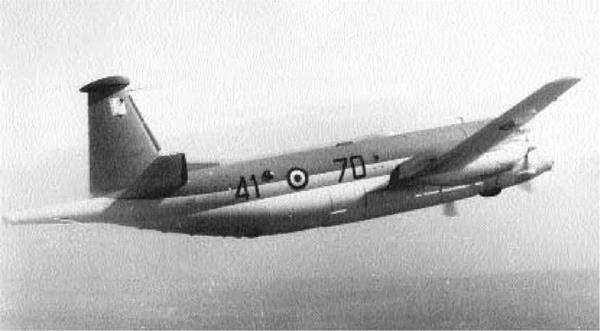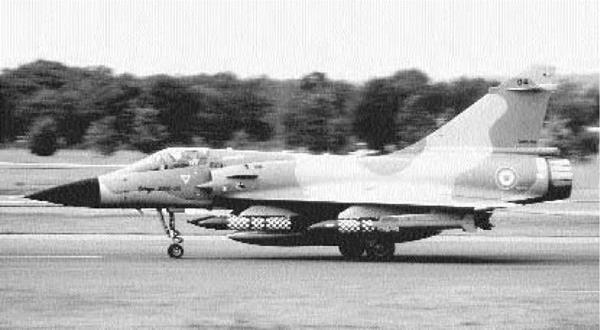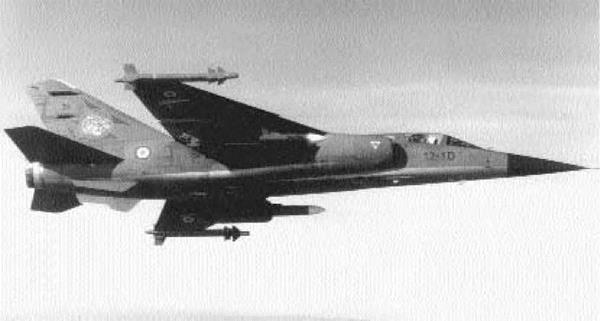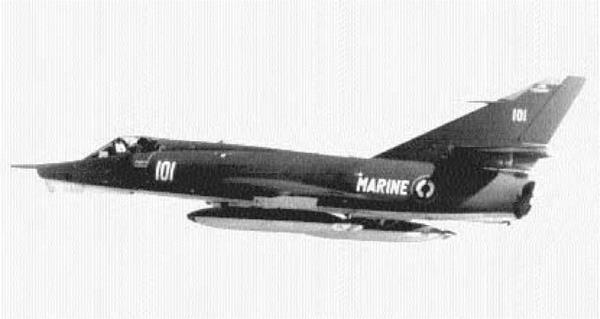. Commonwealth CA12 Boomerang
Type: Fighter
Dimensions: wingspan, 36 feet, 3 inches; length, 25 feet, 6 inches; height, 11 feet, 6 inches Weights: empty, 5,450 pounds; gross, 7,600 pounds
Power plant: 1 x 1,200-horsepower Pratt & Whitney R-1830 Twin Wasp radial engine Performance: maximum speed, 296 miles per hour; ceiling, 29,000 feet; range, 930 miles Armament: 4 x.303-inch machine guns; 2 x 20mm cannon Service dates: 1943-1945
|
P |
ugnacious in appearance, this interim fighter was Australia’s only indigenous warplane designed during World War II. Tough and agile, it did valuable ground-support work throughout New Guinea.
Commencement of the Pacific War in December 1941 caught the Royal Australian Air Force completely unprepared. Its combined fighter strength then consisted of two squadrons equipped with outdated Brewster F2A Buffaloes, and they were deployed at Singapore. Given the urgency of the situation, the government resolved to build a new fighter out of local materials and talent, rather than wait for replacements from the United States and Great Britain. Fortunately, the Commonwealth Aircraft Corporation was well situated to assist. Since 1938 it had been assembling Wirraway trainers and light bombers, which were based upon the excellent North American AT-6. It became necessary to construct a new craft using as many Wirraway components as possible. Laurence J. Wackett drew up the initial design in February 1942, and the first prototype flew that May. Christened the
CA 12 Boomerang, it bore a marked resemblance to the earlier Wirraway with major refinements. It was a low-wing, all-metal monoplane featuring a fully enclosed cockpit, retractable landing gear, and a three – blade propeller. The CA 12 was slower than the Japanese fighters it opposed, but it displayed great structural strength and maneuverability.
The first batch of Boomerangs arrived in the fall of 1942 and became operational in the spring of
1943. In service they proved themselves to be tough, agile customers. They never shot down a single Japanese aircraft but did outstanding ground-attack work in the mountain jungles of New Guinea. Using its exceptional maneuverability over rough terrain, CA 12s would identify Japanese troop concentrations at low altitude, strafe them, and mark their position with smoke bombs for incoming bombers. For two years they fought in this capacity, unheralded but loved by the infantrymen they assisted in this grinding campaign. All were retired by 1945 after a production run of 250 machines.

Type: Antisubmarine; Patrol-Bomber
Dimensions: wingspan, 122 feet, 9 inches; length, 110 feet, 4 inches; height, 35 feet, 8 inches Weights: empty, 56, 659 pounds; gross, 101,850 pounds
Power plant: 2 x 6,100-horsepower Rolls-Royce Tyne Mk 21 turboprop engines Performance: maximum speed, 368 miles per hour; ceiling, 30,000 feet; range, 1,150 miles Armament: up to 7,716 pounds of rockets, bombs, or torpedoes Service dates: 1989-
|
T |
he Atlantique 2 is Europe’s latest and most modern antisubmarine warfare (ASW) aircraft. It combines state-of-the-art electronics with a robust, highly durable airframe.
Russian submarine construction of the 1950s sufficiently alarmed NATO into issuing requirements for a long-range maritime patrol aircraft to replace the aging Lockheed P2V Neptune. The new machine would have to conduct lengthy oceanic patrols and carry modern ASW equipment. In 1958 a contract was awarded to the French firm of Breguet, which by 1961 had constructed the first prototype Atlan – tique. This was a low-wing, all-metal monoplane with two engines and dual-wheel landing gear. It also featured a Thomson CSF search radar in a retractable radome. This aircraft differed conceptually from aircraft employed by the United States and Canada, as the Lockheed P-3 Orion and Canadair CL 28 Argus were essentially modified commercial airliners. The Atlantique, by comparison, was designed from the ground up as a dedicated ASW aircraft. A total of 87 were constructed and deployed
by France, Germany, the Netherlands, Italy, and Pakistan with considerable success.
By the 1970s a successor machine was needed, so Dassault (which had absorbed Breguet in 1971) suggested utilizing an improved airframe with greatly updated electronics. The first prototype Atlantique 2 was derived from an existing Atlantique in 1981 and markedly resembles the earlier craft. However, it employs vastly improved engines and construction techniques, including better anticorrosion protection and better sealing between the panels. The new airframe now has a service-life expectancy of 30 years. The At – lantique 2’s electronic suite is a mind-boggling array of the very latest computer-enhanced sensory equipment. The new Thomson-CSF Iguane radar has an over-the-horizon sweep, tracks 100 targets simultaneously, and can reputedly pick out objects as small as a submarine snorkel at a distance of several miles! The plane also carries a lethal array of antishipping missiles, torpedoes, and depth charges that are electronically tethered to the radar. Currently France is the sole operator, with 42 machines on order.

Type: Fighter; Light Bomber; Strategic Bomber
Dimensions: wingspan, 30 feet; length, 47 feet, 1 inch; height, 17 feet, 1 inch
Weights: empty, 16,535 pounds; gross, 37,478 pounds
Power plant: 1 x 14,460-pound thrust SNECMA M53-P2 turbofan engine
Performance: maximum speed, 1,543 miles per hour; ceiling, 54,000 feet; range, 2,073 miles
Armament: 2 x 30mm cannons; up to 13,890 pounds of conventional or nuclear weapons
Service dates: 1983-
|
T |
he Mirage 2000 represents the third generation of a famous fighter design. Assisted by the latest fly-by-wire technologies, it enjoys all the advantages of delta configuration with none of the vices.
By the early 1970s, the Armee de l’Air was considering a new generation of fighters to serve as its avion de combat futur (future combat fighter) and eventual replacement for Mirage IIIs and F 1s then in service. Dassault originally advanced the very large F 2 Super Mirage design, which was rejected as too costly. The French government then stipulated a smaller, lighter machine along the lines of the General Dynamics F-16. In 1975 Dassault was authorized to proceed with plans for the Mirage 2000, a much tidier aircraft with an inherent 1:1 thrust-to – weight ratio. It revived the classic delta wing of old that, in this instance, was carefully blended into the roots for less drag. Moreover, by utilizing fly-by-wire technology—whereby computers assist and correct pilots while maneuvering—the fuselage was built
with its center of gravity farther back than usual. This makes for an intrinsically unstable aircraft that is highly maneuverable. The delta wing was also increased in overall area to allow for lower wing loading (pounds per square foot of wing area), which in turn resulted in superior low-altitude performance. The first Mirage 2000 flew in 1978, with initial deliveries arriving in 1983. Around 440 have been built.
In 1979 Dassault was asked to come up with a two-seat version of the Mirage 2000 as a possible replacement for the aging Mirage IV nuclear bombers. The resulting Model 2000N (nuclear) first flew in 1991 with heavily revised avionics and a strengthened airframe for low-altitude work. This capable craft employs an Antilope radar that enables safe flying as low as 200 feet while barreling along at 700 miles per hour! Conventionally armed versions of the craft, the Mirage 2000D and S, are also being developed for the export market. Various versions are also operated by Egypt, Taiwan, India, and Peru.

Type: Fighter; Light Bomber
Dimensions: wingspan, 30 feet, 6 inches; length, 50 feet, 2 inches; height, 14 feet, 9 inches Weights: empty, 16,314 pounds; gross, 35,715 pounds Power plant: 1 x SNECMA Atar 9K-50 turbojet engine
Performance: maximum speed, 1,453 miles per hour; ceiling, 65,615 feet; range, 520 miles Armament: 2 x 30mm cannons; up to 13,889 pounds of bombs, missiles, and rockets Service dates: 1973-
|
T |
he multipurpose F 1 was an attempt to expand the flexibility of Dassault’s already capable Mirage III. It has taken the basic design to new levels of efficiency and, like its predecessor, is operated by many nations.
Responding to a 1964 Armee de l’Air requirement for a new all-weather interceptor, Dassault began work on a two-seat, 20-ton design—the F 2— which retained some similarities to the earlier Mirage III but was much larger. At length this machine was rejected, but a smaller design—the F 1—was developed as a company-funded project. Basically, it utilized the fuselage of the Mirage III but was fitted with a shoulder-mounted swept wing and tail surfaces. This more conventional layout yielded immediate advantage over the delta configuration, being less susceptible to energy loss during rapid maneuvering. The new F 1 also enjoyed a runway roll rate less than half that of the Mirage III. And because bladder tanks were superceded by in
tegral fuel space, the F 1 possesses 40 percent greater range. The French military was very pleased with the new machine, which became operational in 1973 as the F 1C. As an interceptor, it is capable of lifting off with only two minutes’ warning. The advanced Cyrano II radar then enables it to track and lock on incoming targets, regardless of low – altitude ground clutter. The F 1 also makes a better ground-attack craft than the Mirage III family, especially with regard to turbulence, as it handles better at low altitude.
The F 1C, like its forebear, was an outstanding success story in terms of export, for it is employed by no less than 11 nations. Its most notorious user was Iraq, which used them with good effect during the lengthy Iran-Iraq War. During the 1991 Gulf War, Mirage F 1s had the dubious distinction of serving on both sides. More than 900 have been manufactured, and these will continue on as a major service type for years to come.

Type: Fighter; Light Bomber
Dimensions: wingspan, 26 feet, 11 inches; length, 49 feet, 3 inches; height, 14 feet, 9 inches
Weights: empty, 15,542 pounds; gross, 21,164 pounds
Power plant: 1 x 9,436-pound thrust SNECMA Atar 9C-3 turbojet engine
Performance: maximum speed, 1,460 miles per hour; ceiling, 75,460 feet; range, 746 miles
Armament: 2 x 30mm cannons; up to 8,818 pounds of bombs or rockets
Service dates: 1961-
|
T |
he sleek Mirage III remains one of the classic fighter designs of all time and helped propel France to the forefront of military aviation. Through constant upgrades, many still fly in frontline service around the world.
In 1952 the Armee de l’Air sought an advanced lightweight interceptor to replace its aging Dassault Mysteres. The desired craft was intended to be built around two small turbojets and a small rocket booster. Dassault complied with a small delta design, the Mirage I, in 1953, but it was rejected as insufficiently powered. The firm then went on to develop the bigger Mirage III as a company project; it was powered by a single turbojet engine. In 1956 this craft became the first European warplane to exceed Mach 2, and the French military immediately expressed interest. The Mirage III was a conventional delta design, with a relatively small wing and a sharp, pointed profile. It was highly maneuverable and handled well, but like all delta designs it suffered from
high landing speeds and a prolonged takeoff. Nonetheless, the first Mirage III entered service in 1961 and was followed by numerous multimission variants. It was also widely exported abroad, especially to Israel, which used them with decisive effect in the 1967 war. Most French machines have since been retired, but Mirage IIIs are continually upgraded and flown by several air forces, including Australia, Argentina, Brazil, and South Africa.
In 1967 Israel asked Dassault to design a cheaper ground-attack version, which subsequently emerged as the Mirage 5. This model lacked advanced radar systems in exchange for more fuel and greater payload. It too was an export success. The final development was the Mirage 50 of 1979, which utilizes the Mirage 5 airframe in concert with a more powerful engine and advanced avionics. It is currently utilized by more than 20 nations and will continue flying well into the twenty-first century. A total of 1,400 Mirages of all variants has been constructed.

Type: Fighter
Dimensions: wingspan, 31 feet, 6 inches; length, 46 feet, 11 inches; height, 12 feet, 8 inches
Weights: empty, 14,220 pounds; gross, 25,353 pounds
Power plant: 1 x 11,025-pound thrust SNECMA Atar turbojet engine
Performance: maximum speed, 749 miles per hour; ceiling, 44,950 feet; range, 404 miles
Armament: 2 x 30mm cannons; 1 x AM39 Exocet missile
Service dates: 1978-
|
T |
he Super Etendard is a modest strike fighter with transonic capabilities. However, once armed with the deadly Exocet antishipping missile, they sank two British ships during the 1982 Falkland Islands War.
In the early 1950s, NATO began seeking light, low-cost attack craft as alternatives to more expensive conventional jet fighters. In 1956 Dassault fielded its prototype Etendard IV (etendard meaning “standard” or “flag”) as a competitor. It was a relatively small machine with sweptback wings and a pronounced fence under the chin. Being somewhat underpowered, it lost out to the Fiat G 91, but Dassault privately developed a navalized version with stronger landing gear and an arrester hook. In 1958 the French navy authorized production, and the first Etendard IVs joined the fleet in 1962 as reconnaissance/strike fighters. By 1971 a more modern replacement was needed, and the French government announced its intention to procure navalized Jaguar M aircraft. When that project unraveled because of spiraling cost overruns, Dassault again proposed a refurbished
Etendard machine. By the time they were deployed in 1982, they bore little commonality with the original craft and received the designation Super Etendard. The new machine boasts a bigger engine, greater fuel capacity, and a redesigned wing. It also possesses an advanced navigation/attack radar and can be refueled during flight. Although somewhat modest in performance compared to U. S. and British carrier aircraft, the Super Etendard is fully capable of deploying the very accurate Exocet antishipping missile.
In the spring of 1982, Argentina, which operated five Super Etendards, made world headlines when pilots sank the British destroyer HMS Sheffield and cargo ship Atlantic Conveyor off the Falkland Islands. The next customer to employ them was Iraq, then in a protracted struggle with Iran over control of the Persian Gulf. Iraqi pilots attacked several Iranian tankers and even badly damaged a U. S. de- stroyer—allegedly by mistake. These aircraft returned to France in 1985 in exchange for Mirage F 1s. Despite continual upgrades, the Super Etendard will be phased out by Dassault Rafael Cs in 2008.










